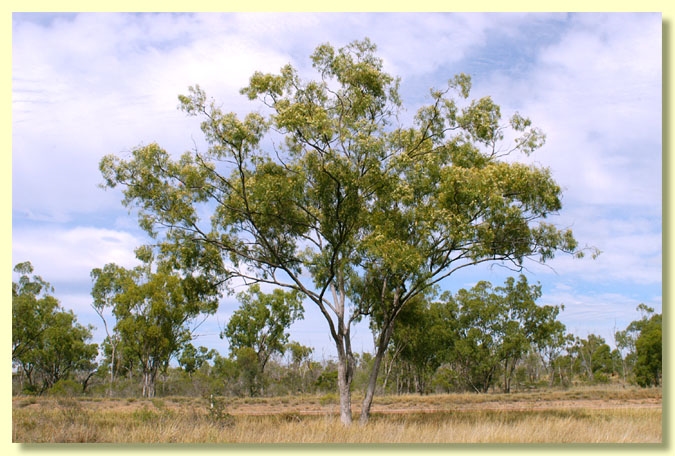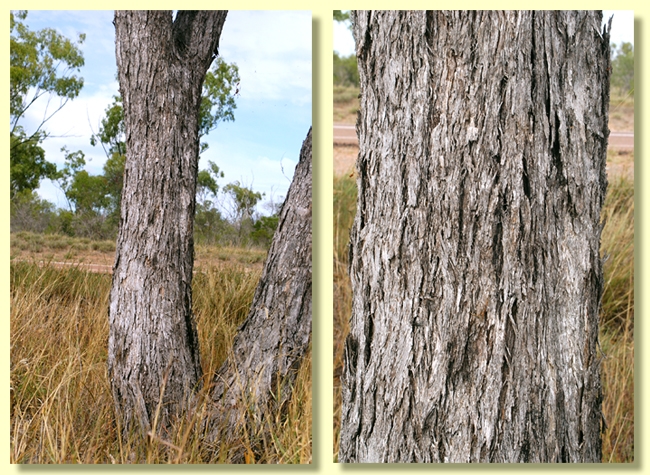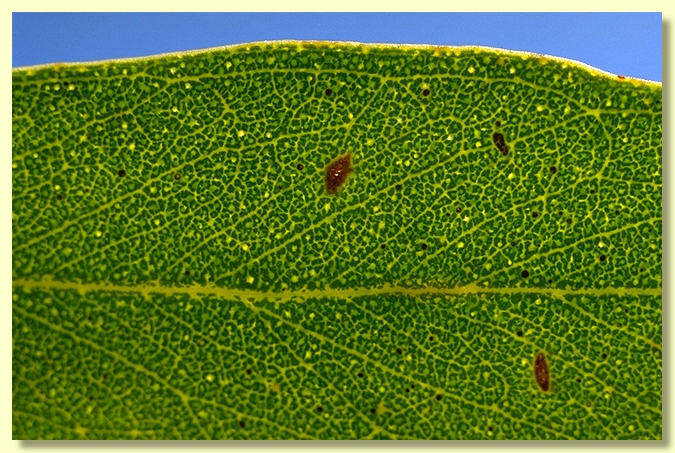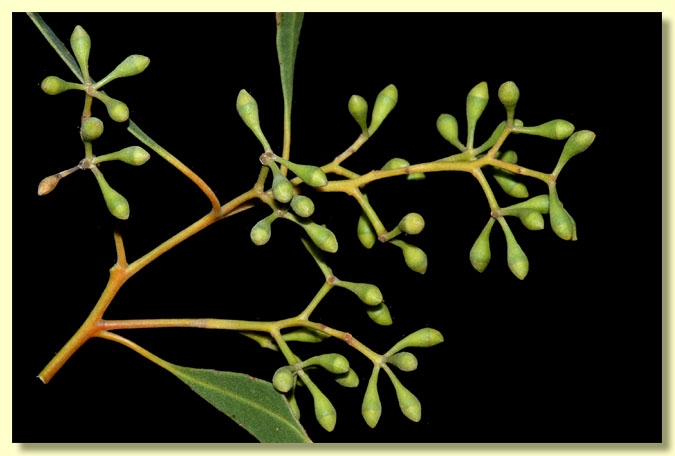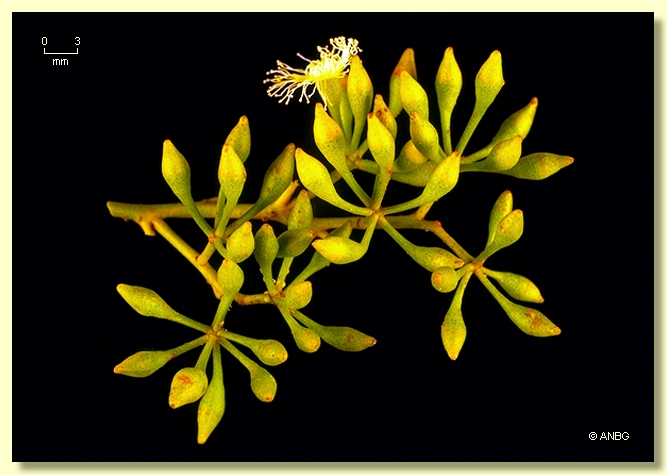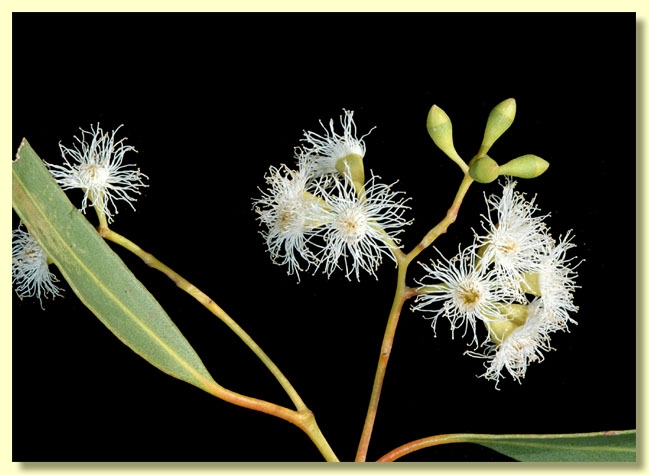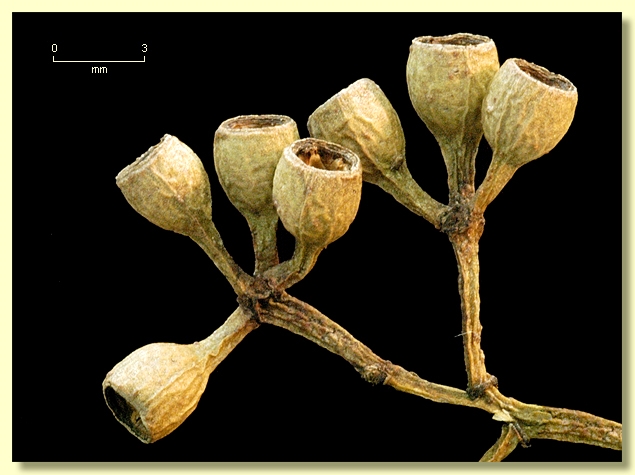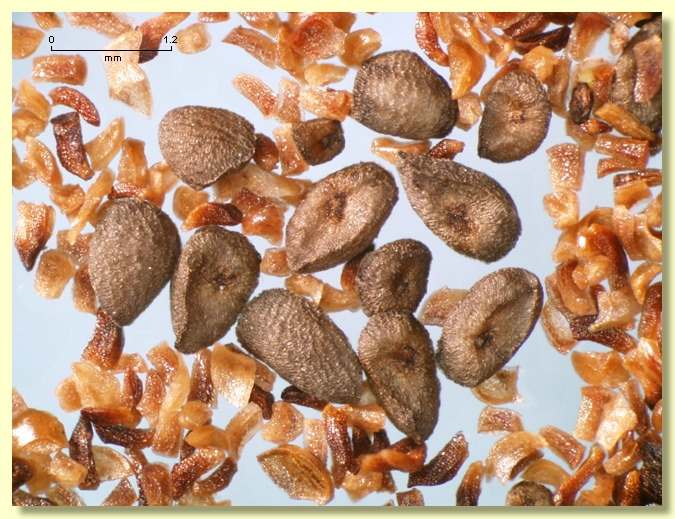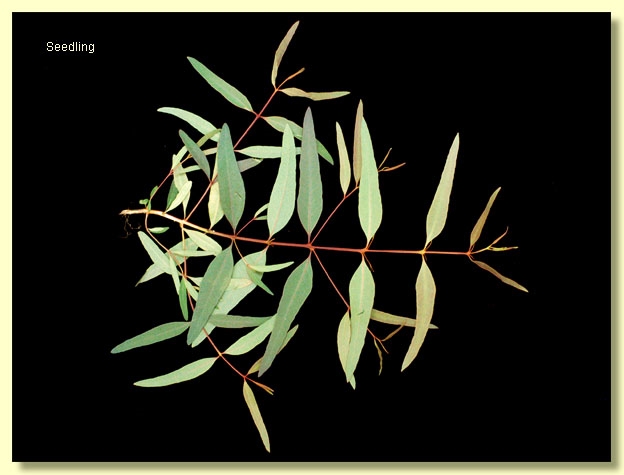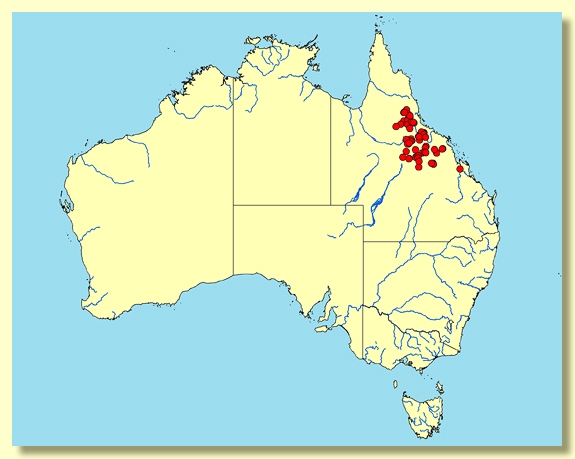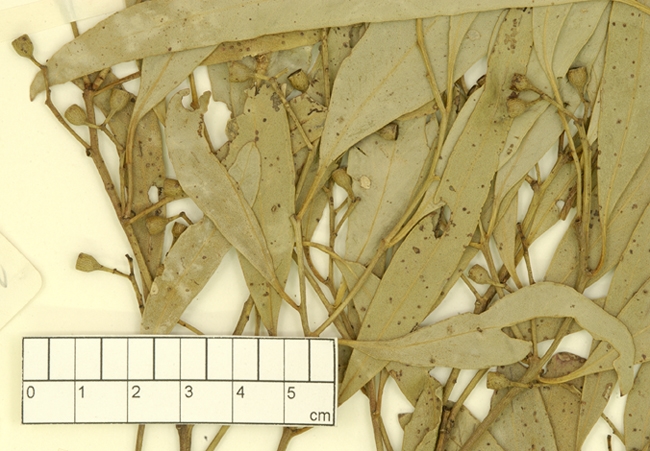Eucalyptus | Symphyomyrtus | Adnataria | Apicales | Buxeales | Continentes
Euclid - Online edition
Eucalyptus persistens subsp. persistens
Tree to 12 m tall, rarely a mallee. Forming a lignotuber.
Bark rough to small branches, box-type often tessellated, dark grey.
Juvenile stems square to rounded in cross-section; juvenile leaves sessile to shortly petiolate, usually alternate, sometimes opposite, narrowly lanceolate to linear, 4.5–10 cm long, 0.4–1 cm wide, dull, blue-grey, rarely ± glaucous.
Adult leaves alternate, petiole 0.5–1.7 cm long; blade lanceolate, (5)7–14(16.5) cm long, 0.7–2(2.3) cm wide, base tapering to petiole, concolorous, usually dull, sometimes glossy, green, side-veins at an acute angle to midrib, somewhat irregularly spaced, densely reticulate, intramarginal vein parallel to and well removed from margin, oil glands mostly intersectional.
Inflorescence terminal compound, or with some axillary compound, peduncles 0.5–1.2 cm long; umbels 7-flowered, pedicels 0.2–0.7 cm long. Mature buds obovoid to rarely ovoid or pyriform, 0.3–0.6 cm long, 0.2–0.3 cm wide, green to yellow, scar usually absent (outer operculum remains intact with the inner and both are shed together at anthesis), operculum conical to rounded or shortly beaked (outer operculum with small lobes at the apex), stamens irregularly flexed, all fertile, anthers adnate, globoid to cuboid, dehiscing by lateral or subterminal pores, style long, stigma blunt to tapered, locules normally 3, rarely 4, the placentae each with 4 vertical ovule rows. Flowers white.
Fruit on pedicels 0.2–0.6 cm long, usually cupular or barrel-shaped, 0.3–0.5 cm long, (0.2)0.3–0.4 cm wide, disc descending, valves 3 or 4, near rim level or enclosed.
Seeds brown, 1–1.5 mm long, ovoid or flattened-ovoid, dorsal surface shallowly reticulate, hilum ventral.
Cultivated seedlings (measured at ca node 10): cotyledons small, reniform; stems square in cross-section, warty or smooth; leaves always at least shortly petiolate (petioles 0.5–0.7 cm), opposite for about 5 to 7 nodes, narrowly lanceolate, 6.8–9.3 cm long, 1–2 cm wide, base tapering, dull, green, discolorous.
Flowering has been recorded in April, May, June, July, September and October.
A small tree species from central and northern Queensland, from the Marlborough district just north of Rockhampton, west to the Aramac area of central Queensland, then north through the ranges and undulating country of the Great Dividing Range to just east of Hughenden and further north-east into the area just north of the Lynd, with a disjunct population (subspecies tardecidens ) just north of Mareeba on the northern end of the Atherton Tablelands which extends further north onto the Cape York Peninsula into the Lakeland Downs area. Characterised by its rough box-type bark to the small branches, its narrow lanceolate to linear juvenile leaves, its adult leaves with the secondary veins somewhat irregularly spaced and at an acute angle to the midrib and the intramarginal vein well removed from the margin, its terminal inflorescences, buds with the stamens irregularly flexed and normally all stamens fertile and the cup-shaped to barrel-shaped fruit where the valves are enclosed or near the rim.
It must be very closely related to E. largiflorens, a box tree widespread on flood plains of the Murray/Darling River systems from south-eastern Queensland, New South Wales and Victoria and South Australia, also occurring north of Adelaide and to a lesser extent in the Lake Frome and Lake Eyre watersheds in north-eastern South Australia. Morphologically there is not a lot separating E. persistens from E. largiflorens. Both have box bark to the small branches, both have narrow juvenile leaves, both have similar leaf venation, both have buds where the outer operculum can shed before anthesis or remain intact and both opercula shed together at anthesis. Apart from both occupying very different habitats in very different geographic regions, there is not a lot more we can offer to help separate these two species on morphological grounds.
Brooker (2000) places Eucalyptus persistens in Eucalyptus subgenus Symphyomyrtus section Adnataria (the boxes) because the buds have two opercula, ovules are in four rows, seeds are flattened-ovoid, cotyledons are reniform, and anthers are rigid on the staminal filaments. Within section Adnataria, Brooker places E. persistens in a subgroup, series Buxeales subseries Continentes, further distinguished by having buds that retain the outer operculum until flowering time when both opercula are shed together, though paradoxically one subspecies, E. persistens subsp. tardicedens, does shed the outer operculum early in bud development.
Eucalyptus persistens is also closely related to E. normantonensis which can be separated by having rough basal box bark but smooth bark on the upper trunk and branches. E. persistens is rough-barked to the small branches. E. normantonensis can be further separated by possessing staminodes (sterile outer stamens). E. persistens has all stamens fertile. A recent segregrate from the E. persistens group is E. provecta. It looks very similar to E. persistens in habit with rough box bark to the small branches but like E. normantonensis, it differs by possessing staminodes.
Within its area of occurence there are two other fully rough-barked box species that may be confused with E. persistens, i.e. E. brownii and E. microneura. Both can be separated by the colour of the adult leaves. E. brownii is very glossy green, E. microneura is normally grey-green to blue-grey to glaucous, while E. persistens is normally dull green. Another fully rough-barked tropical box species from north Queensland, E. chlorophylla, differs in having glossy green adult leaves, slightly 4-angled buds that shed the outer operculum early and obconical fruit.
There are two subspecies:
E. persistens subsp. persistens
Occurs from the Marlborough region of central Queensland extending inland to the Aramac region and then continues further north to the area just north of the Lynd. Differs from subsp tardecidens by retaining its outer operculum, with both shedding together at anthesis (operculum scar absent).
E. persistens subsp. tardecidens
Occurs from just north of Mareeba on the Atherton Tablelands to just south of Lakeland Downs on Cape York Peninsula. Differs from subsp. persistens by shedding its outer operculum early in bud development (operculum scar present, often the outer operculum remaining semi-attached at the apex of the inner operculum).
Eucalyptus persistens: Latin persistens, persisting, referring to the outer operculum which normally persists until anthesis and also to the persistent rough bark.

